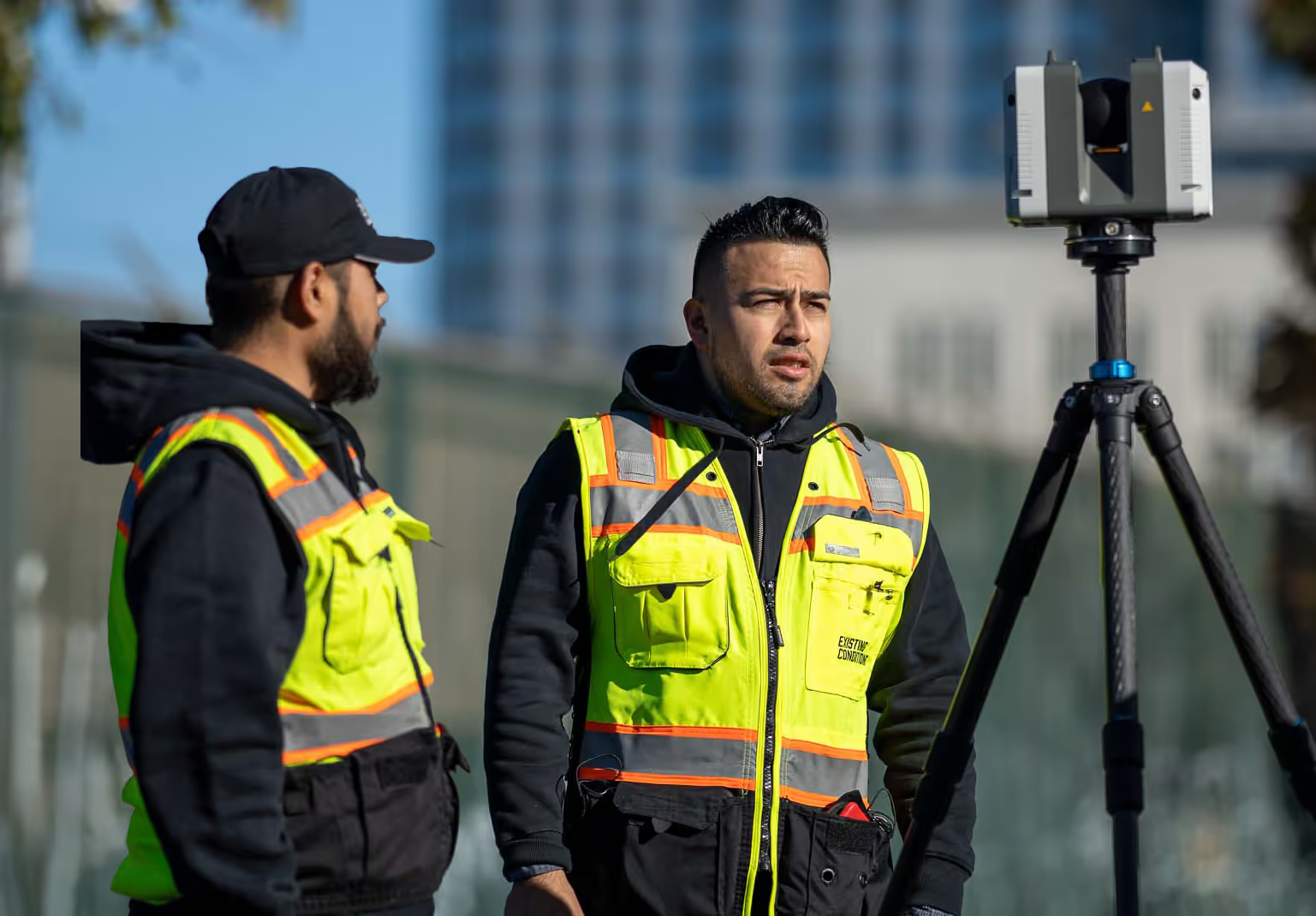The Montgomery House
Highlights

Client

Services

Categories

Equipment
The William Montgomery House was undertaking a preservation and adaptive reuse project, completing an exterior façade restoration and interior renovation, to seamlessly integrate into a new Lancaster Marriott Hotel under construction.
The historic home needed as-built documentation of the 220-year-old building to equip stakeholders with precise data to assess structural conditions and plan for renovations.
Comprehensive as-built documentation completed via 3D laser scanning and drone imagery provided insights into the condition and intricacies of this historic asset to facilitate preservation and restoration.
The client was able to maintain the historical significance, architectural value, and cultural identity of the William Montgomery House within the Lancaster community, while adapting the space to modern needs and uses.
History of The Montgomery House
Built in 1803, The William Montgomery House, a Federal-style stone house was designed by Stephen Hills and built for William Montgomery, a prominent Chester County attorney. It served as a residence for several generations of the Montgomery family until a great-granddaughter passed away in 1939, later becoming the first Lancaster YWCA, a hardware store, a barbershop, and rental units. The William Montgomery House was listed on the National Register of Historic Places in May 2000.

3D Laser Scanning & Drone Imagery of The Montgomery House
The Montgomery House received detailed spatial data from 3D laser scanning to facilitate structural analysis and restoration planning.
The Leica RTC360 laser scanner captured a colorized point cloud of every architectural and structural feature, delivering precise layouts and measurements for informed decision making. 3D laser scanners are non-contact, using a laser light projected onto the surface to collect precise 3D data points (LiDAR), keeping this historic site untouched.
Drone imagery further enhanced the documentation, offering comprehensive 3D visualization, overlaying color and texture onto the point cloud for architectural analysis.

Scope of Work
Exterior building restoration was planned to occur during the construction of the Lancaster County Convention Center and Lancaster Marriott Hotel from 2006 to 2009.
The interior design plan included incorporating the first level into the Marriott’s main lobby, while upper levels were designated as high-end meeting and hospitality spaces.
The client required precise documentation for renovation efforts, as traditional documentation methods would be inadequate due to the building's architectural complexity and historical significance.
While revitalizing this space, the 3D laser scan point cloud, drone video and survey imagery ensured that important architectural elements, like the square-shaped façade and hipped roof could remain intact; and the interior updates could be planned to meet current building codes, energy efficiency standards, and accessibility requirements.

Deliverables
Colorized Point Cloud: The Leica RTC360 laser scanner captured a colorized point cloud of every architectural and structural feature, delivering precise layouts and measurements.
Drone Imagery: High-resolution video and imagery offered a safe and detailed visual analysis of this historic home. When combined with an exterior building scan using terrestrial laser scanning, this visual drone media is a great alternative to a full 3D Revit model or CAD exterior elevations.

Benefits
3D laser scanning can be used for a variety of historical building engineering applications, from existing as-built drawings to plan for maintenance, to historical documentation of architecture, and more.
The technology delivers powerful point clouds and 3D BIM models for adaptive reuse and renovation projects. In this case study, The William Montgomery House can experiment with different building aesthetics, functionality, and sustainability plans in a virtual environment.
Here are the benefits of laser scanning historic buildings:
- Elimination of return visits to the site
- As-builts for design and renovation
- Minimized construction rework due to interferences
- Accurate measurements for fabrication
- Fast, unobtrusive scene capture
- Non-contact technology leaves architecture untouched
- Safe way to measure buildings that are no longer structurally sound
By capturing intricate details with accuracy, Existing Conditions provides architects with the data needed to make informed restoration and adaptive reuse design decisions. Our commitment goes beyond documentation—we equip architects with the insights necessary to safeguard these landmarks, ensuring their cultural and architectural significance remains intact for future generations.
Existing Conditions 3D Laser Scanning Services
Over the past 27 years, Existing Conditions has measured, documented, and modeled over 10,000 buildings across the United States, establishing ourselves as an industry leader in 3D laser scanning.
Architects trust us to deliver digital representations of the as-built environment with unparalleled accuracy and efficiency. Our dedicated Project Managers provide fast and accurate 3D laser scanning services and drone imagery services, and expert CAD and BIM technicians create custom, detailed deliverables, including point clouds, 2D CAD drawings, 3D BIM models, 3D mesh models, TruViews, and 3D virtual tours.
Our greatest reward remains delivering superior-quality scan-to-BIM work and knowing we played a vital role in our clients’ historical architecture and preservation projects.
Related Case Studies




















